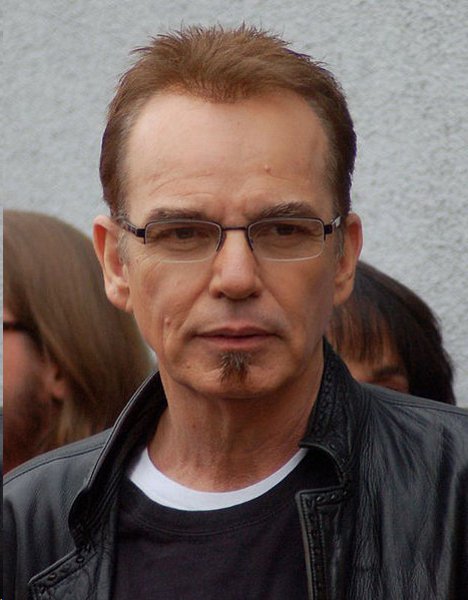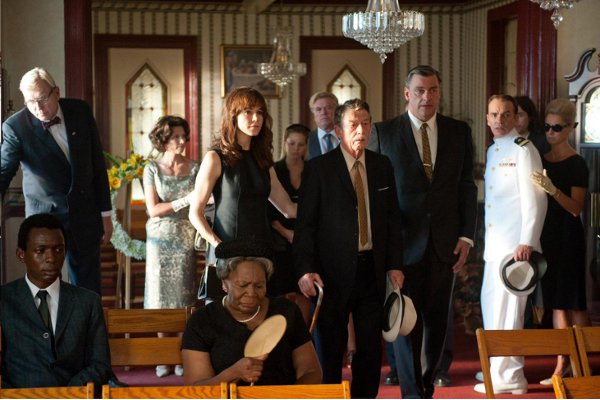Hollywood Cinematographer Barry Markowitz Discusses Capturing the Soul of the South on Film

When he suggested getting lunch at the fanciest restaurant in town to actor and director Billy Bob Thornton while the two were shooting Sling Blade, Barry Markowitz wanted a break from fast food. So the Brooklyn-born director of photography wasn’t exactly expecting Thornton’s response.
“He said, let’s go to a nice restaurant, like the nicest restaurant in town – a regular, sit-down place,” Thornton recalled in a phone interview. “I said, ‘That would be Shoney’s.’ And he said, ‘No, no, I mean the best sit-down restaurant in town.’ I said, ‘Well, that would be Shoney’s.’”
Markowitz was shocked that Shoney’s was the chicest choice in Central Arkansas, and he was even more surprised at the language lesson he got from Thornton over orders of home-style fare, such as country fried steak and gravy or liver and onions.
“I had to teach him how you don’t curse around your elders in the South, you know. He was kind of loud and using the F-word, and I said, ‘Down here, you don’t do that. There are some church ladies in here,’” Thornton said. “So I had to teach him the etiquette of the South a little bit.”
It’s a lesson Markowitz now knows well after years of working with directors including Thornton, Robert Duvall and Nicholas Cage on Southern films such as Sling Blade, The Apostle and Sonny. He also served as director of photography for Thornton’s latest, Jayne Mansfield’s Car. So how did this New Yorker who earned a degree in Jewish history from Israel’s Hebrew University become the go-to cinematographer for Southern films for these Oscar-winning directors and actors? Markowitz is a self-professed stranger in a strange land populated – at least in films – by pickup trucks, hunting dogs and humidity levels higher than hell's. Still, he manages to depict the South in fashion that captivates Southern-born directors and audiences alike, thanks to his outsider’s knack for emphasizing the region’s natural beauty, history and unique characters, while simply staying out of an actor’s way.
“The people you see just walking down the street, the faces you see are just so full of soul that you can see a history there,” said Thornton. “It’s a naturally beautiful and interesting place to shoot, so you don’t have to do a lot to fluff it up.”
Markowitz agrees, explaining he has a hard time deciding what not to include when shooting in areas such as Bayou Boutte, the setting for The Apostle, or the Atlanta area, where he and Thornton filmed much of Jayne Mansfield’s Car. This dark family comedy has an ensemble cast that includes Duvall, Thornton, Kevin Bacon and John Hurt, and is scheduled for general release by Anchor Bay Films early this year.

“There is no slim pickings there. The different kinds of topography, the people who live down there, the beautiful faces and what have you,” Markowitz said. “It's like a feedbag of great stuff, and they are all so naturally welcoming.”
That was the case even though Markowitz’s accent and demeanor immediately indicate he’s a New Yorker. Given the warm welcome he received from everyone he encountered, Markowitz was more intrigued than threatened when the Sling Blade film crew crossed paths with David Duke a few times. In the early 1990s, the former Ku Klux Klan leader was traveling through the South as part of a failed bid for president.
“You know, he didn't represent anybody down there,” Markowitz said of Duke. “Everybody's got their share of racists and anti-Semites, or Northern liberals who have their skewed views of people in the South, which are as messed up as anybody’s.”
Markowitz made efforts to expand his own views while filming in the region, occasionally delving into non-kosher cuisine, visiting a synagogue in Little Rock during the High Holy Days, fighting off chigger attacks after forays into the backwoods and even attending Ku Klux Klan rallies out of curiosity.
“We didn't really confront any racism, although I did go to a few Klan rallies just to stand behind the barricade and watch,” he said. “But that’s not what Arkansas or the South is about. That's a big myth.”

Markowitz sees myth busting as part of his mission as a cinematographer, and his approach fits well with the recent trend of making Southern movies that go beyond the classic narratives of racism, violence and redneck relations, said Dr. Deborah Barker, whose latest book project is on racial and sexual violence in Southern film. Indeed, films like Sling Blade, Junebug – an early film credit for actress Amy Adams – and David Gordon Green’s George Washington are just a few examples of smaller-budget films by Southern writers and directors that have given the movie-going public a broader, more-complex view of the region and its inhabitants.
“We are moving away from some of the more stock characters associated with the South and we are moving away from the stock narratives,” said Barker, who teaches at the University of Mississippi. “We are just seeing aspects of, and characters in, the South that we just haven’t seen.”
Staying away from visual stereotypes is one of the keys to showing a deeper view of the South, she said. But favoring realism over romanticism isn’t easy because so many films of the past paint the South as a land untouched by modern times, where people are somehow more authentic and closer to nature. The South of the big screen is also a land where the most common forms of transportation still involve dirt roads and rusty red pickups with air conditioning that's unreliable, at best.
“I think the danger perhaps of coming from the outside is romanticizing it. Particularly to romanticize the poverty and actually romanticize the humidity. That can be a real problem,” said Barker, who points to films like A Time to Kill.
The 1996 movie starring Matthew McConaughey is based on the best-seller by John Grisham and focuses on a justice system overshadowed by racism in rural Mississippi.
“Everybody is just doused in water in the courtroom. I think non-Southerners have this image of the South in film is really set more from the ‘30s,” Barker explained. “So there is this idea that there is no air conditioning. People are always fanning themselves.”
And while Markowitz is quick to point out coon dogs and pickup trucks do sometimes exist in the South, he aims to depict the realities of the region by approaching his job from an observational, rather than a technology-driven, standpoint. He doesn’t go looking for the most gothic settings or spend hours on end getting the lighting and angles just right at the expense of acting.
“I try to fly under the radar, try to have my actors come to me rather than chase them around with dollies and zooms and all kinds of junk,” he said. “I try to always let the story come to me not me going after the story. The camera should never be there in a movie, it should just be observing.”
It’s the same approach Thornton takes when filming a movie, making Markowitz an ideal choice as director of photography, no matter what the region. The actor, writer and director said he and Markowitz are interested in making real movies about real people, not sensational action adventures featuring dizzying camera angles and comic book characters.
“He has a real appreciation for character and he’s not pretentious with his work,” Thornton said. “He really wants to capture the real thing, so he doesn’t try to pretty things up when they don’t need to be. He appreciates whatever the person or thing is itself and tries to capture it the way it is.”
Photos: Zimbio; Angela George (Wikipedia Commons).






























































































































































































































































































































